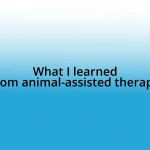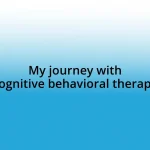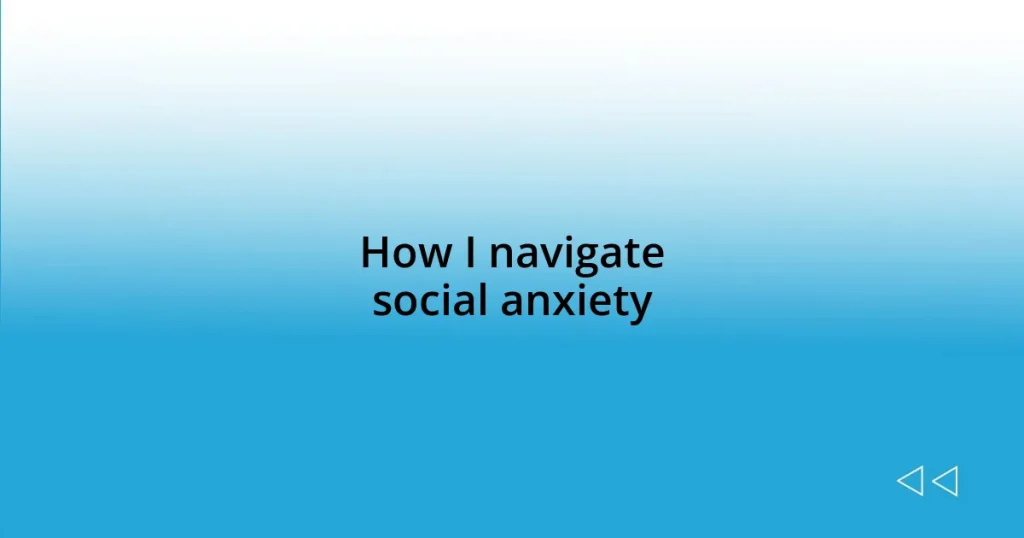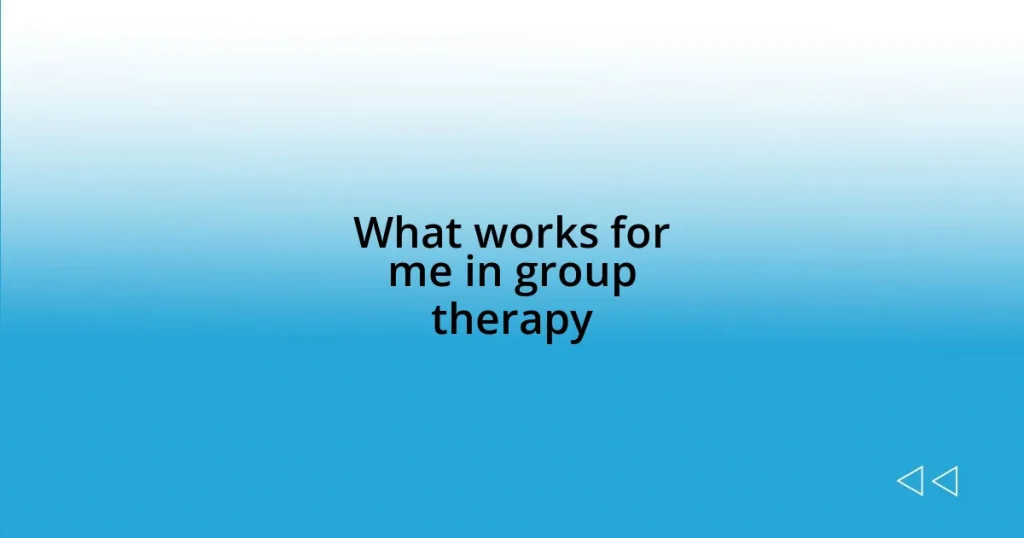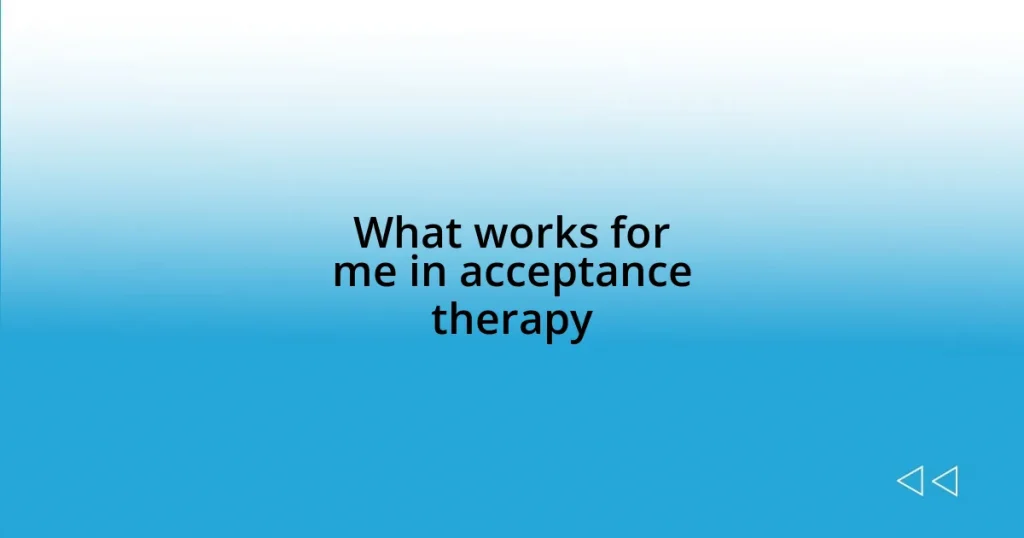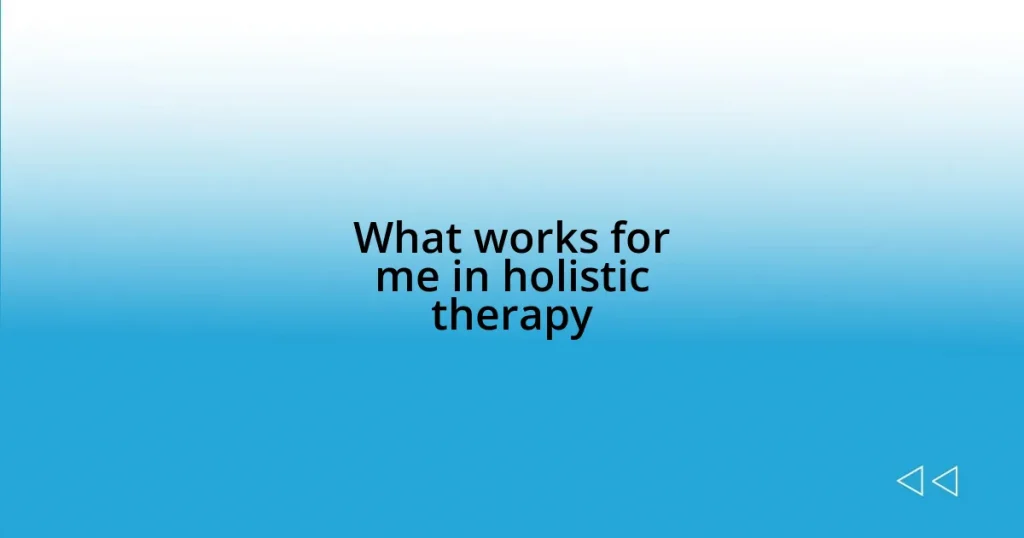Key takeaways:
- Social anxiety manifests in various situations, not just large gatherings, due to self-imposed pressure and fears of judgment.
- Identifying personal triggers—specific situations, social dynamics, and thought patterns—can enhance awareness and coping strategies.
- Effective coping strategies include mental visualization, grounding techniques, and mindfulness practices to manage anxiety during social interactions.
- Building a support network and tracking progress through journaling fosters validation and motivation in overcoming social anxiety challenges.
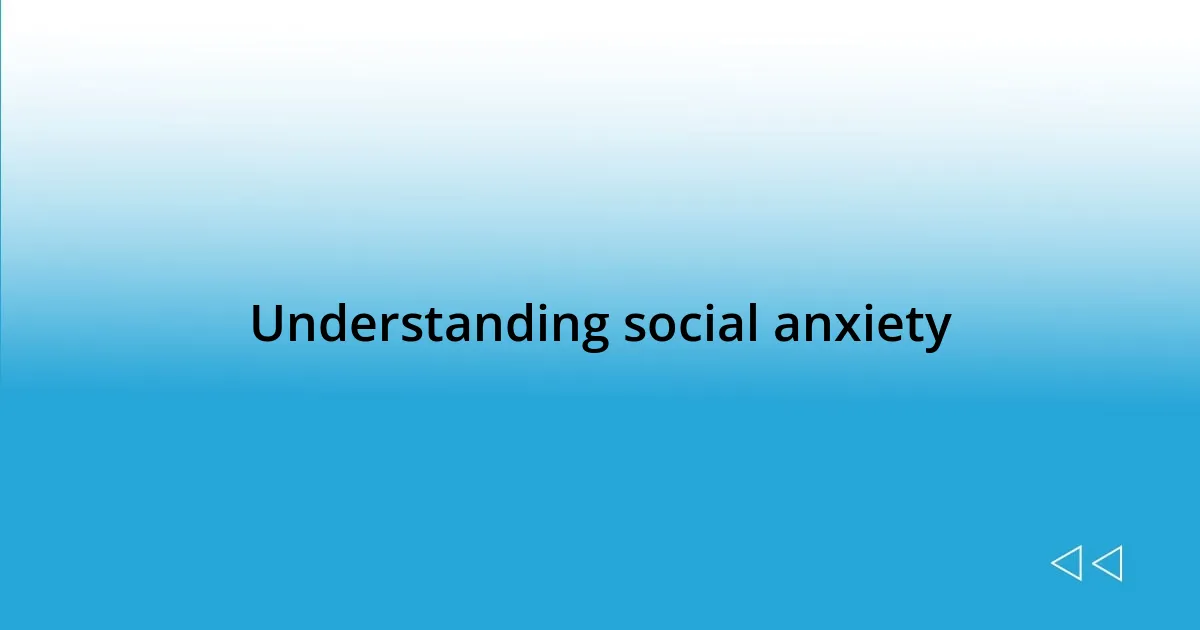
Understanding social anxiety
Social anxiety often feels like an unwelcome shadow looming over social situations. I remember a time when I stood in a crowded room, my heart racing as I debated whether to join a conversation or quietly slip out. It’s a gripping feeling, isn’t it? The fear of being judged or embarrassing oneself can create a haunting self-awareness that often leaves us paralyzed in our thoughts.
What’s fascinating—and frustrating—is how social anxiety can appear in various forms. For instance, I’ve found that it’s not always about large gatherings; sometimes, it’s just the thought of making small talk with a coworker in the break room. Have you ever noticed how even familiar faces can seem daunting? This feeling often stems from the pressure we place on ourselves to be perfect or to meet certain expectations, which can be exhausting.
It’s important to recognize that social anxiety is more than just shyness; it can be an overwhelming experience that colors our perceptions. I used to think everyone else was confidently navigating social waters while I drowned in my worries. It’s a common misconception, right? Understanding that many people struggle with similar feelings can, surprisingly, bring a sense of relief and connection.
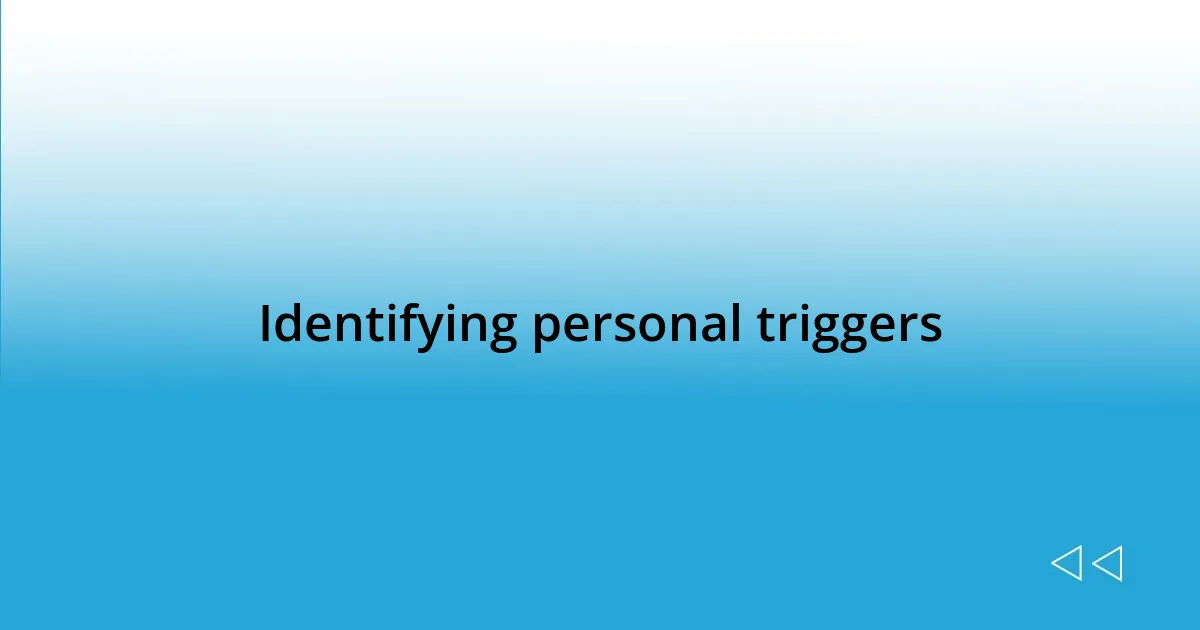
Identifying personal triggers
Identifying personal triggers is a crucial step in managing social anxiety. I’ve often found that certain situations or environments can provoke intense feelings of nervousness. For example, I realized that when I entered a bustling café alone, my anxiety levels skyrocketed. This realization helped me pinpoint that crowded spaces with too much chatter can overwhelm me.
To further understand your own triggers, consider the following:
- Specific Situations: Notice if you feel anxious in certain settings, like parties or public speaking events.
- Social Dynamics: Pay attention to how interactions with specific people affect your anxiety.
- Physical Responses: Identify when your heart races or palms sweat—what circumstances were you in?
- Thought Patterns: Reflect on the negative thoughts that surface during social situations.
- Emotional Reactions: Recognize feelings that accompany anxiety, such as embarrassment or frustration.
Unearthing these triggers can be an enlightening journey, allowing you to navigate social interactions more mindfully. Each realization feels like pulling away the curtain on a previously hidden aspect of my anxiety, empowering me to face those situations with greater awareness.
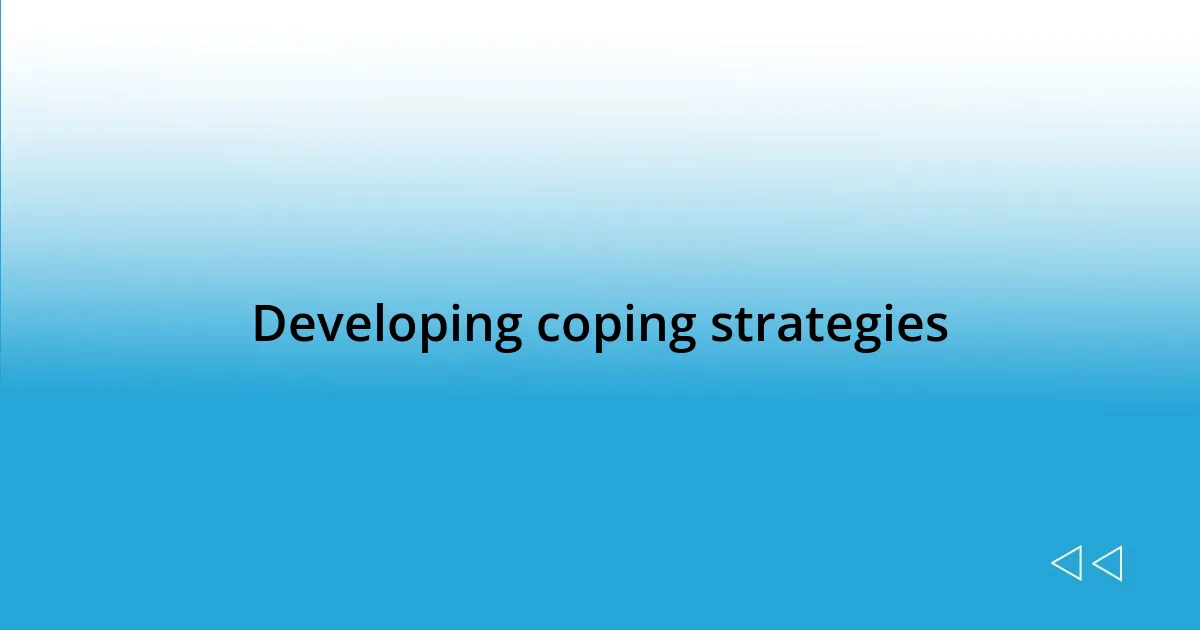
Developing coping strategies
Developing coping strategies has been a game-changer for managing my social anxiety. I’ve learned that small, manageable steps can lead to significant progress. For instance, before entering a social event, I sometimes visualize a positive interaction, which subtly shifts my mindset. It’s like a mental rehearsal that prepares me for the experience ahead. Have you ever tried picturing a scenario before it happens? It can make a world of difference!
I also rely on grounding techniques to help ease the anxiety when it starts creeping in. A simple tool I use involves focusing on my breath. By taking deep, slow breaths and counting to four as I inhale, and then four as I exhale, I can anchor myself in the present moment. Surprisingly, this allows me to regain a sense of control when anxiety threatens to spiral. You might wonder if it really works, and in my experience, it often does!
Additionally, I’ve found that practicing mindfulness has offered me unexpected relief. Being aware of my surroundings and my feelings without judgment helps me break the cycle of negative thoughts. For example, during a recent gathering, instead of stressing over what others might think of me, I focused on enjoying the discussions happening around me. It was liberating! Just remembering that anxiety is a common experience can help soften the self-critical voice that often chimes in during these moments.
| Coping Strategies | Details |
|---|---|
| Mental Visualization | Picturing positive interactions beforehand |
| Grounding Techniques | Focusing on breath, counting to four |
| Mindfulness Practice | Being present, observing thoughts without judgment |
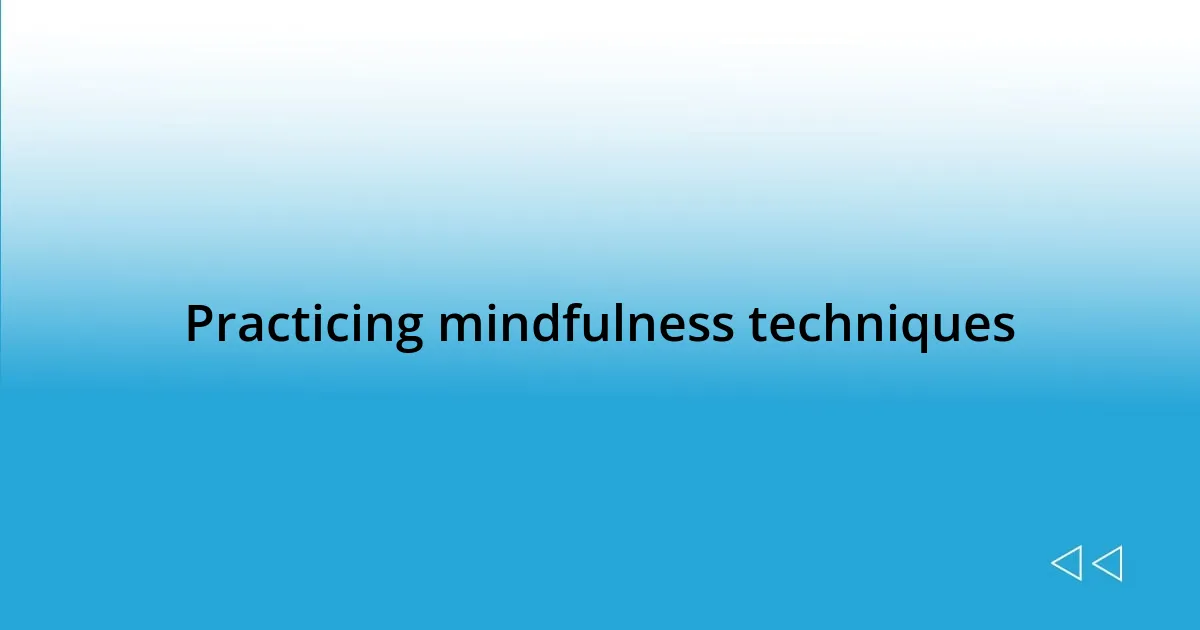
Practicing mindfulness techniques
Practicing mindfulness techniques has become an essential part of my journey with social anxiety. One technique I really value is the body scan meditation. Taking a few minutes to focus on each part of my body — from my toes to the top of my head — helps me reconnect with the present moment. There’s something calming about acknowledging tension in areas like my shoulders or jaw, and intentionally letting that tension melt away. Have you ever tried this? It’s surprisingly grounding.
Whenever I’m faced with a social situation that triggers my anxiety, I remind myself to take a mental step back and observe my thoughts without judgment. This practice helps me distinguish between my anxious feelings and reality. I vividly recall a time at a work event where I felt completely overwhelmed. Instead of spiraling into negative thoughts about how I was perceived, I consciously chose to focus on the flavors of the food and the sounds around me. Suddenly, the pressure dissipated, and I found myself fully engaged. It’s fascinating how shifting my attention can completely reshape my experience.
I also believe in integrating mindfulness into everyday activities. For instance, when I’m out for a walk, I make a point to notice the colors of the leaves or the rhythm of my steps. It transforms mundane tasks into opportunities for presence. Each step becomes a gentle reminder that I can embrace the now, rather than worrying about what others think. Isn’t it empowering to realize that we have the ability to ground ourselves in any situation? Mindfulness offers a pathway back to peace, especially in our most anxious moments.
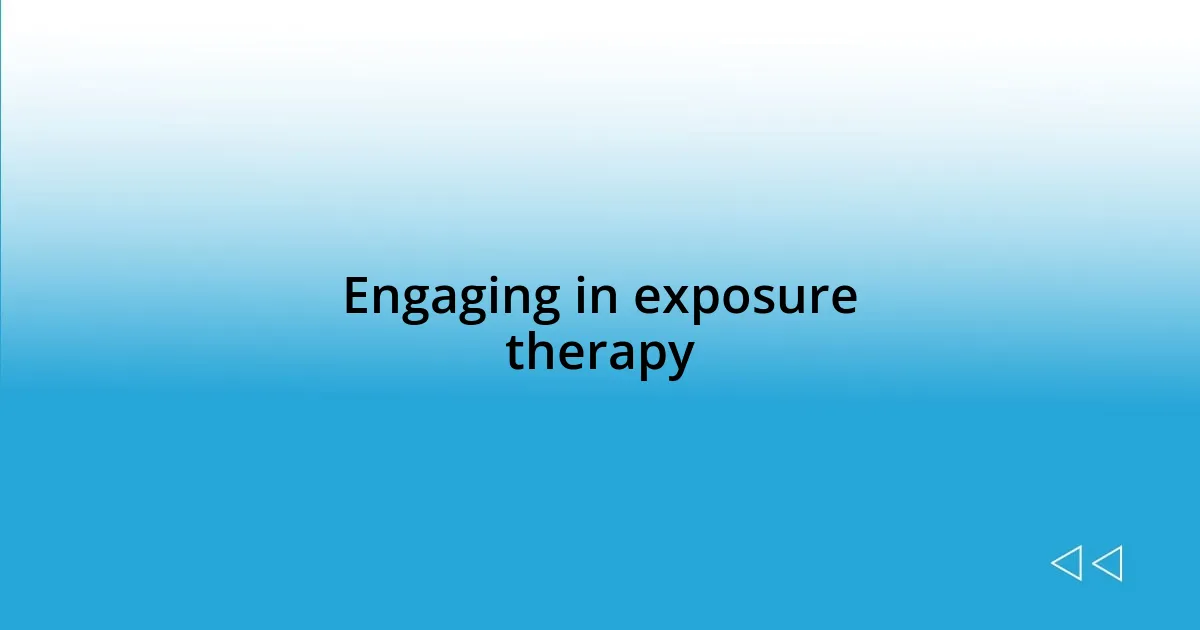
Engaging in exposure therapy
Engaging in exposure therapy has been a pivotal step in my journey with social anxiety. It’s about facing fears, even if it feels uncomfortable at first. I recall the first time I stepped into a crowded cafe alone; my heart raced and my palms were sweaty. But I told myself to embrace the discomfort. It was more challenging than I expected, yet once I sat down and started sipping my coffee, I realized that I could manage the situation without running away. Have you experienced a moment that scared you, but ultimately turned out to be empowering?
In practice, exposure therapy isn’t just about jumping into the deep end. I’ve discovered that gradual exposure helps make the experience more manageable. For instance, I began by making small talk with a cashier before progressing to joining a group conversation. Each interaction became a building block, and I started to see my confidence grow. I often remind myself that every little success counts — it’s about those incremental victories that reduce the anxiety’s hold over me. How do you approach situations that seem daunting?
There’s a certain thrill in noticing my progress over time. Reflecting on those brave moments, like attending a social gathering where I initiated conversations, evokes a sense of achievement. It isn’t always easy, but repeating these experiences reinforces my belief that I can navigate social settings. This journey of exposure has taught me to redefine what’s scary, transforming anxiety into an opportunity for growth. Wouldn’t it be amazing to look back and see how far you’ve come after continuously facing your fears?
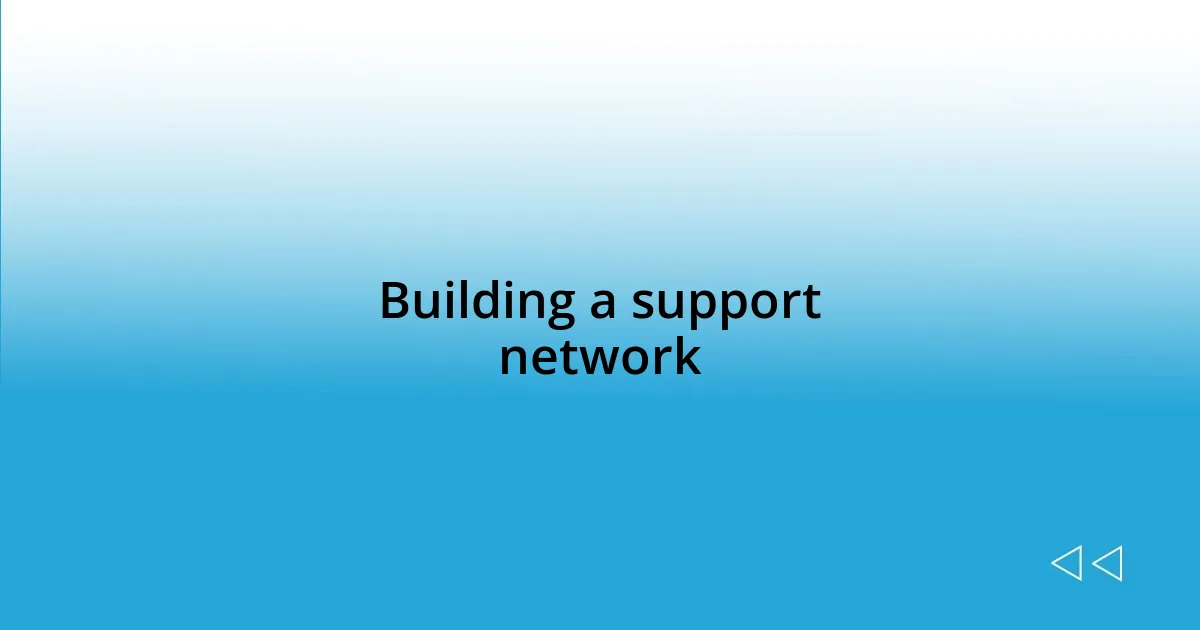
Building a support network
Building a support network has been one of the most validating experiences in my journey with social anxiety. In my case, it began with reaching out to an old friend who understood my struggles. I remember them saying, “You’re not alone in this,” and that simple affirmation brought me immense comfort. Have you ever felt that relief when someone else truly gets what you’re going through?
I’ve learned that relying on supportive friends or family members goes a long way. When I’m preparing for a social event that makes my heart race, I often invite a trusted friend to join me. Their presence acts like a safety net, allowing me to experience the moment without feeling isolated. Just the other week, I attended a gathering where I knew only a few people. My friend’s encouraging smile was all I needed to spark courage and engage in conversations. Isn’t it incredible how a little support can shift your perspective?
Creating a support network isn’t just about finding people; it’s also about cultivating a safe space where vulnerability is welcomed. I’ve found online communities to be particularly helpful. When I share my experiences or seek advice in these forums, I often encounter compassionate individuals who resonate with my feelings. This connection has been instrumental in transforming my anxiety from an isolating burden into something more manageable. Have you explored the power of community in your own life? It’s fascinating how shared experiences can create bonds that nurture healing.
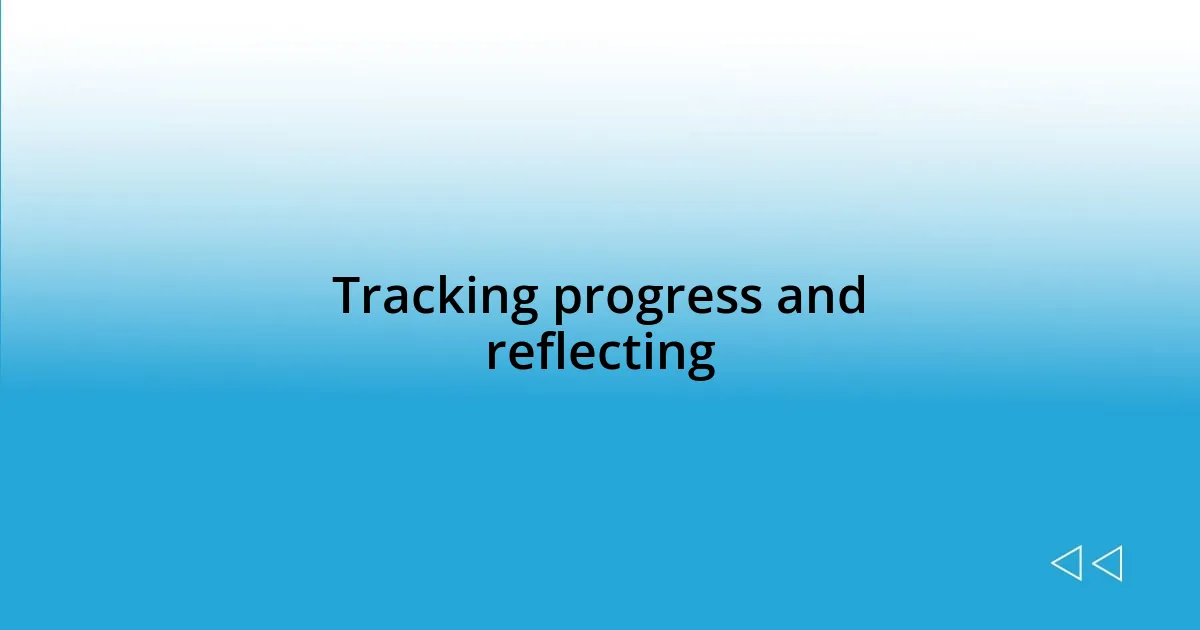
Tracking progress and reflecting
Reflecting on my progress has become a cornerstone of my journey with social anxiety. I often jot down my thoughts in a journal after challenging situations, which allows me to process those experiences more deeply. Just the other day, after a networking event that had my heart racing, I wrote about the moments that sparked joy amidst the anxiety. These reflections not only illuminate my growth but also remind me of the strategies that have worked well. How does documenting your experiences help you?
Tracking my journey visually has also proven to be incredibly motivating. I created a simple chart where I mark each social interaction I attempt, no matter how small. When I look back at these marks, I can see a clear trajectory of improvement. For instance, last month I marked five brave interactions, like chatting with a neighbor and attending a local meetup. It feels rewarding to celebrate these wins. Have you ever considered tracking your own experiences in a way that visually represents your progress?
Embracing this technique of progress tracking has deepened my self-awareness over time. Every tick on that chart serves as a reminder of my resilience. When I encounter setbacks, which are completely normal, I can look back and reassure myself of my capabilities and growth. Just this past week, I faced a challenging situation and almost let self-doubt win. But then I glanced at my chart and thought, “I’ve made it through tougher waters than this.” How has reflecting on your experiences impacted your mindset? Understanding our journeys can truly reshape how we perceive our challenges.





